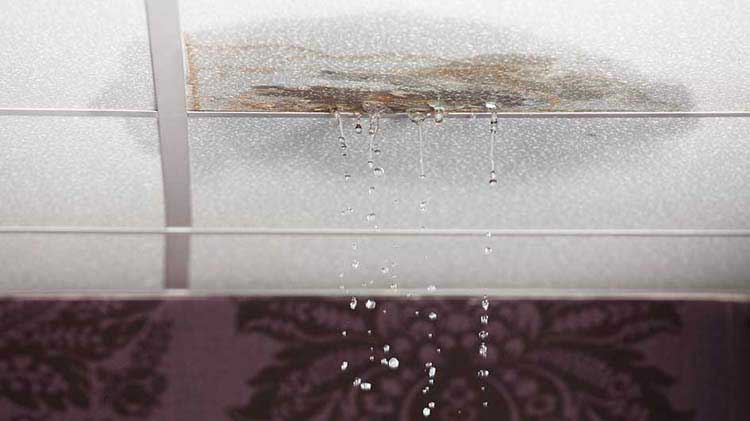Addressing the Six Most Common Water Leaks: Tips for Homeowners
Addressing the Six Most Common Water Leaks: Tips for Homeowners
Blog Article
Nearly everybody is bound to have their personal rationale on the subject of How to detect water leaks in your home.

Leaks not only cause waste of water however can also cause unneeded damages to your residence as well as promote unwanted organic growth. Unfortunately, water leakages could go unnoticed because most of the pipework in our house is hidden. By recognizing as well as looking for day-to-day circumstances that trigger leaks, you can shield your residence from future leakages as well as unnecessary damages. Today, we will look at 6 leakage triggers that may be creating your pipes to drip.
Instant temperature modifications.
Extreme temperature level adjustments in our pipes can trigger them to expand as well as acquire all of a sudden. This growth and also contraction may create cracks in the pipes, especially if the temperature are listed below freezing.
Corroded water supply
As time goes by, your plumbing system ages and rust such as rust may begin gnawing the pipes. This might be the source of discoloration or warping on your water pipes. This requires an examination with your plumber right away. Consider replacing the pipelines considering that they are at a higher threat of deterioration than the more recent designs if our plumbing system is old.
Faulty Pipe Joints
The point at which your pipelines attach is regularly the weakest link in the waterline. Pipeline joints can wear away with time, resulting in water leaks. However, the majority of pipe joints are not quickly visible. If you have noisy pipelines that make ticking or banging noises, especially when the hot water is switched on, your pipe joints are most likely under a lot of pressure. It is recommended to have your plumber check your system yearly.
Trespassing roots
Many water leakages start outside the home rather than inside it. You may notice wet spots or sinkholes in your yard, and also that could imply that tree origins are getting into water lines creating water to seep out.
Poor Water Connectors
At times, a leakage can be brought on by loosened tubes as well as pipes that supply your appliances. Most of the time, changing is what creates the loosened water Connections. You could locate in the case of a washing equipment, a pipe might spring a leakage due to drinking throughout the spin cycle. In case of a water connections leak, you might discover water running directly from the supply line or pools around your devices.
Obstructed Drains
Obstructed drains pipes may be frustrating as well as inconveniencing, yet they can often wind up causing an overflow bring about rupture pipelines. Keep getting rid of any type of products that might drop your drains that might obstruct them to avoid such troubles.
All the above are reasons for leaks but not all water leaks arise from plumbing leaks; some leaks could originate from roofing system leakages. All leaks should be repaired immediately to prevent water damages.
Leakages not only trigger waste of water but can additionally trigger unneeded damage to your residence and advertise unwanted natural development. By looking and comprehending for daily scenarios that cause leaks, you can secure your residence from future leakages and unnecessary damages. Today, we will certainly look at six leak causes that may be triggering your pipelines to trickle.
At times, a leak can be triggered by loosened tubes and pipes that supply your home appliances. In situation of a water links leakage, you might see water running straight from the supply line or pools around your home appliances.
How To Check For Water Leak In Your Home
How To Check for Leaks
The average household's leaks can account for nearly 10,000 gallons of water wasted every year and ten percent of homes have leaks that waste 90 gallons or more per day. Common types of leaks found in the home are worn toilet flappers, dripping faucets, and other leaking valves. These types of leaks are often easy to fix, requiring only a few tools and hardware that can pay for themselves in water savings. Fixing easily corrected household water leaks can save homeowners about 10 percent on their water bills.
To check for leaks in your home, you first need to determine whether you're wasting water and then identify the source of the leak. Here are some tips for finding leaks:
Take a look at your water usage during a colder month, such as January or February. If a family of four exceeds 12,000 gallons per month, there are serious leaks.
Check your water meter before and after a two-hour period when no water is being used. If the meter changes at all, you probably have a leak.
Identify toilet leaks by placing a drop of food coloring in the toilet tank. If any color shows up in the bowl after 10 minutes, you have a leak. (Be sure to flush immediately after the experiment to avoid staining the tank.)
Examine faucet gaskets and pipe fittings for any water on the outside of the pipe to check for surface leaks.
Undetected water leaks can happen without the home or business owner even realizing. If you suspect a water leak, but not able to find the source. It is time to contact a professional water leak detection service, The Leak Doctor.
How To Find a Water Leak In Your Home
https://www.leakdoctor.com/blog/How-To-Check-For-Water-Leak-In-Your-Home_AE197.html

We had been shown that article on How to detect water leaks in your home from someone on our other web blog. Enjoyed reading our piece? Please share it. Let another person discover it. Kudos for your time. Don't forget to check our site back soon.
Make An Appointment Report this page